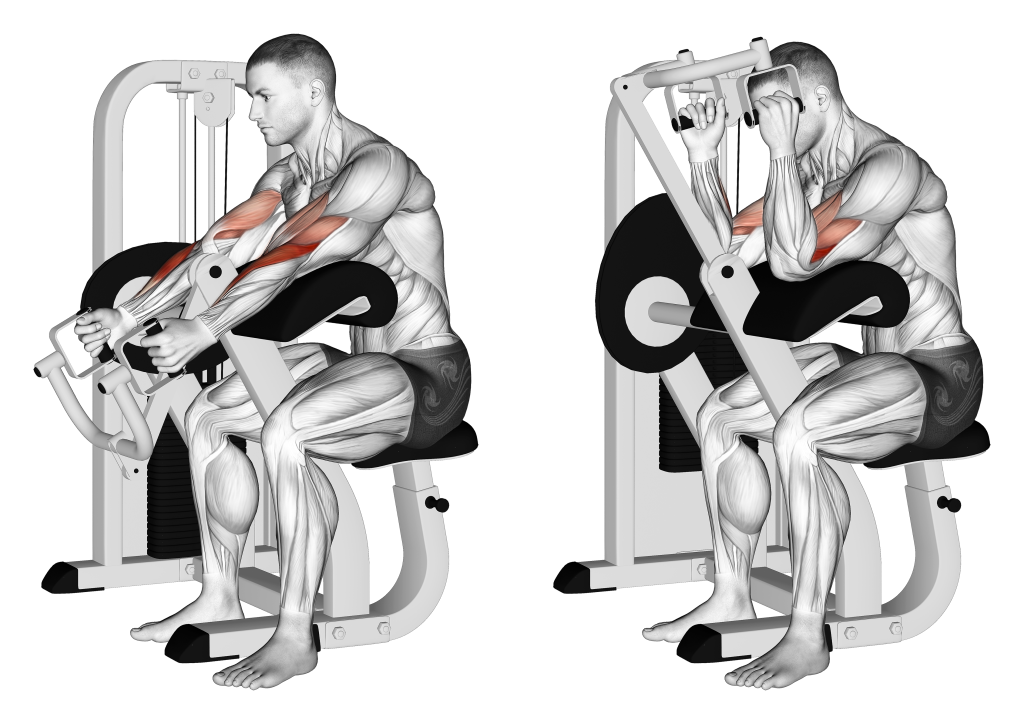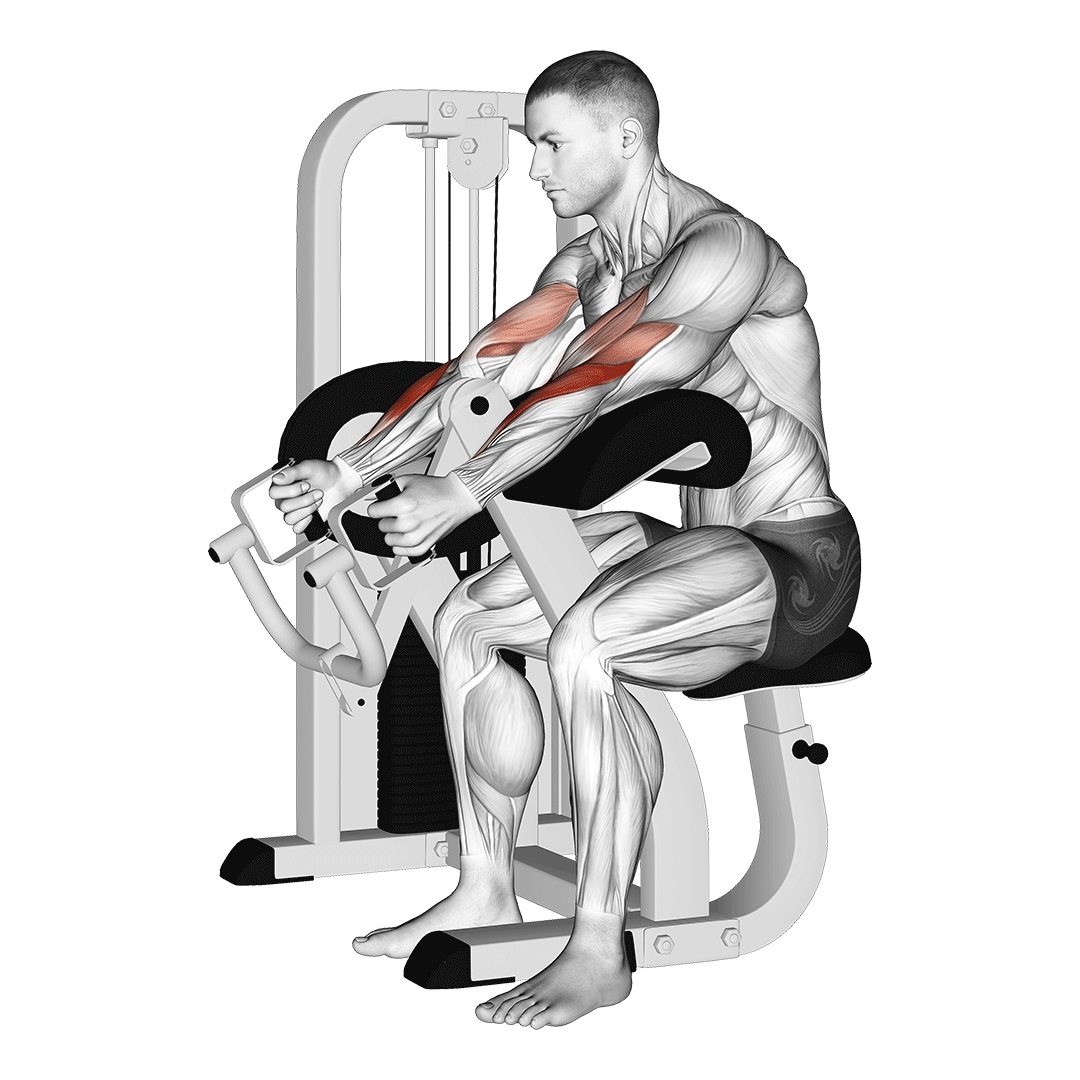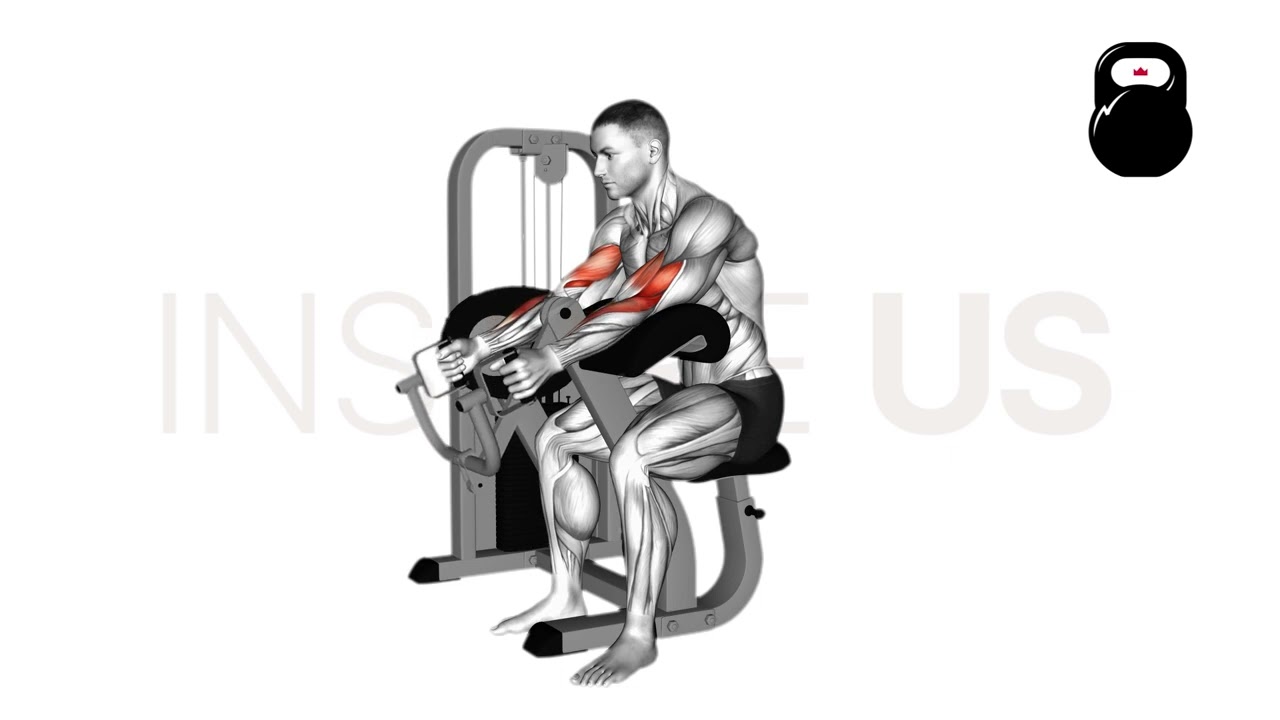Machine Hammer Curl: Muscles Worked and More
The machine hammer curl is an isolation exercise meant to target the elbow flexor muscle group of the arms.
Unlike traditional hammer curls where the exercise is most effective in a standing position, the majority of hammer curl machines will make use of a seated stance and a preacher bench to maximize range of motion.
Hammer Curl Machine at a Glance
Equipment Requirements
Hammer Curl Machine
Main Muscles Targeted
Brachialis, Brachioradialis, Biceps Brachii
Difficulty
Easy
Sets, Reps, and Load Recommendations
3-5 Sets of 6-12 Repetitions at a Light Load
How to Do Machine Hammer Curls
- To perform a repetition of machine hammer curls, the lifter seats themselves within the machine, pressing their elbows and triceps against the preacher pad as they hold the handles in a neutral grip.
Some adjustments of the machine may be necessary so as to achieve a full range of motion. The upper chest should be high over the pad, but with the lower body supported by the seat so as to avoid “cheating” the repetition. - Keeping the upper arms and armpits stationary against the pad, the lifter then squeezes their elbow flexor muscles and pulls the handles towards their face.
- Once the handles are approximately over the upper arms and the forearms are nearly vertical in angle, the lifter squeezes their elbow flexors for a moment before slowly lowering the handles back downwards.
- With the elbows loosely extended and the handles back in their original position, the repetition may be considered complete.
Additional Tips:
To maximize tension placed on the elbow flexor muscles, lifters should avoid fully extending the elbows at the end of each repetition. Keeping the brachioradialis muscles engaged by maintaining some degree of elbow flexion throughout the set will allow for greater overall intensity.
Another great tip is to experiment with different grip widths.
Some lifters may find a closer neutral grip to be better at engaging their brachioradialis muscles, whereas a more outward grip may target the brachialis better.
Sets and Reps Recommendation:
To maximize hypertrophy, keeping the load light or moderate for 3-5 sets of 8-16 repetitions should suffice.
What Muscles Do Machine Hammer Curls Work?
Machine hammer curls are an isolation exercise, as they only really target a single group of muscles.

These are primarily the brachioradialis of the forearms and the brachialis of the upper arms - although the biceps brachii are also worked in a secondary capacity.
Common Machine Hammer Curl Mistakes to Avoid
Though the machine hammer curl is a considerably safe exercise, avoid the following common mistakes so as to keep your workout safe and effective.
Incomplete Range of Motion
The most important aspect of machine hammer curl technique is achieving a full range of motion. An incomplete range of motion can alienate specific muscles from the movement - or otherwise lead to instability and weakness within certain ranges of elbow flexion.

Each repetition should start and end with the forearms lower than the elbows, with the elbows themselves being near full extension.
Likewise, the apex or “top” of the repetition should have the brachioradialis fully engaged and the forearms at a 90 degree angle to the elbows at the least.
Detaching the Upper Arms From the Pad
In order to avoid cheating the repetition or otherwise shortening the movement’s range of motion, the lifter should strive to keep their upper arms as stationary as possible.
Hammer curl machines help facilitate this by featuring a preacher curl bench as part of their design - where the lifter should keep their upper arms pressed against the wedge-shaped pad in order to isolate the elbow flexors properly.
Another good cue to maintain proper arm positioning is to ensure the armpits are flush along the top of the pad, positioning not only the arms but also the trunk correctly as well.
Shrugging the Shoulders
Though less of an issue than other common mistakes, lifters should avoid hunching or shrugging their shoulders when performing hammer curls of any variation.
Doing so can reduce the stability of the entire trunk, and may lead to a shorter range of motion - especially when combined with poor arm positioning.
The machine hammer curl should be performed with the shoulders relaxed and rotated into a neutral position. Some amount of scapular elevation may necessary if the machine is adjusted poorly, but should nonetheless be avoided as much as possible.
Flexion or Extension of the Wrists
To avoid injuring the wrists or otherwise contracting the wrist flexors/extensors, the lifter must keep the wrists themselves as neutral as possible.
Apart from actually using a neutral grip orientation, no forward curl (flexion) or backwards bending (extension of the hands should be present. Aim to keep the palms and thumbs aligned with the rest of the forearm.
Who Should Do Machine Hammer Curls?
The machine hammer curl is among one of the safest exercises a lifter can perform. Even complete novices to resistance training can master it within a single training session.
The exercise itself is most effective for bodybuilders and similarly hypertrophy-focused athletes seeking thicker arms, as the elbow flexor muscles contribute greatly to the muscularity and width of both the forearms and upper arms.
References
1. Kleiber, Tim et al. “Muscular coordination of biceps brachii and brachioradialis in elbow flexion with respect to hand position.” Frontiers in physiology vol. 6 215. 6 Aug. 2015, doi:10.3389/fphys.2015.00215

